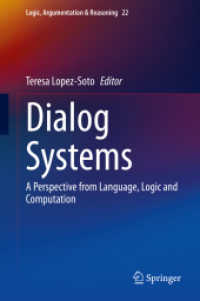- ホーム
- > 洋書
- > ドイツ書
- > Mathematics, Sciences & Technology
- > Technology
- > electronics, electrical engineering, telecommunications
Full Description
The new edition of this book provides the basis for the design of new mobility assistive ICT (information and communication technologies) devices for the visually impaired.








